Hi and welcome to Susanality, a newsletter by me, Susan Spungen, that celebrates seasonal cooking. If you enjoy today’s recipes, please help spread the word by forwarding this email to others who may like them too!
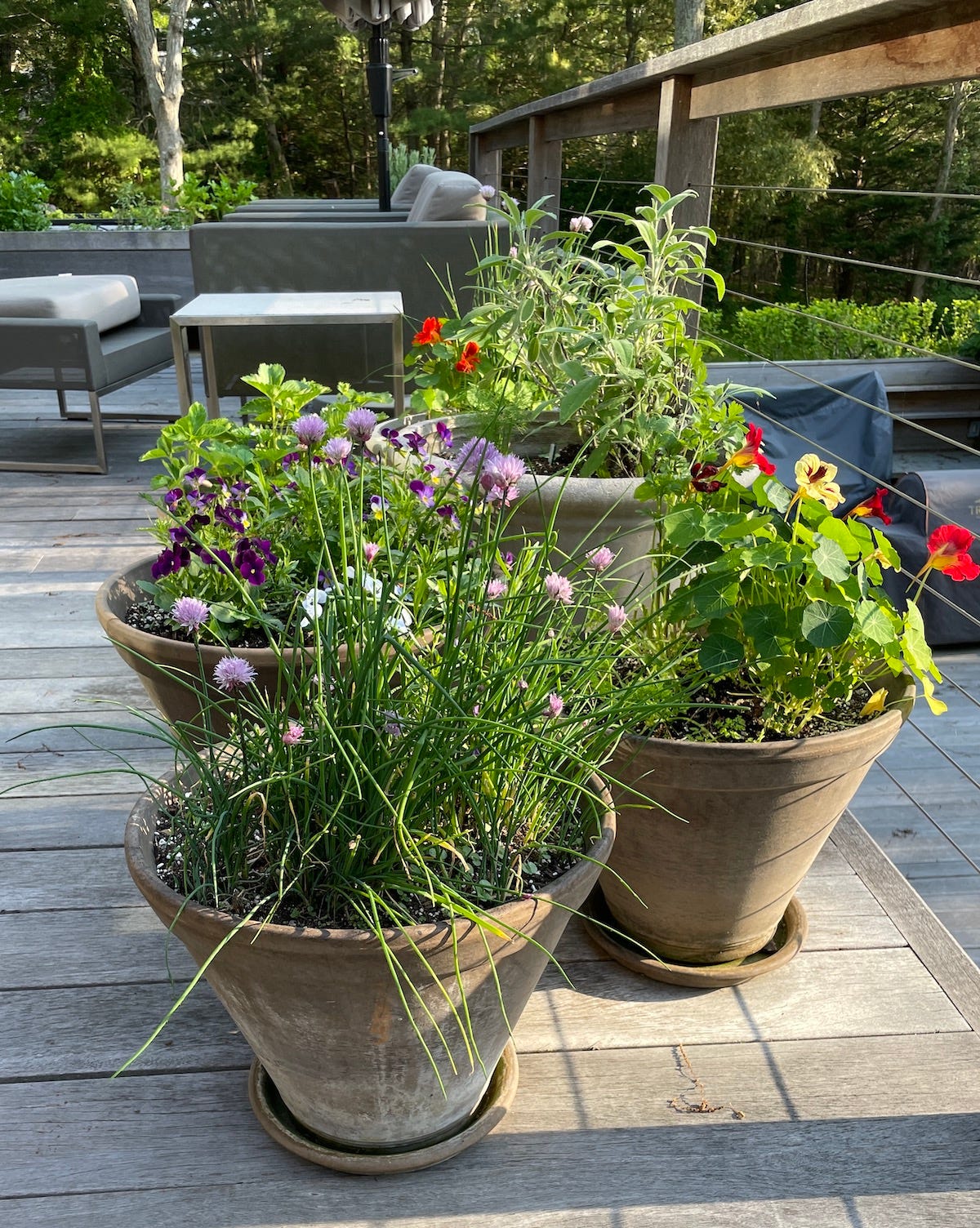
As you‘ve probably noticed by now, fresh herbs figure prominently in my cooking style. A few weeks ago, I posted an Instagram story of my herb garden and got lots of questions and reactions, so I thought it would be nice to devote today’s post to it. I admit it’s getting a little late in the season for planting, but if this inspires you, you can plan ahead for next year. Or give it a try with just a few herbs and let me know how they fare!
I don't plant a vegetable garden, as I’ve mentioned before. And here’s why:
Voles
Moles
Squirrels
Chipmunks
Not enough sun in any one spot
Not enough time to tend to it
Too many good farm stands to shop at
Our CSA, Quail Hill Farm (i.e., there are plenty of vegetables growing nearby)
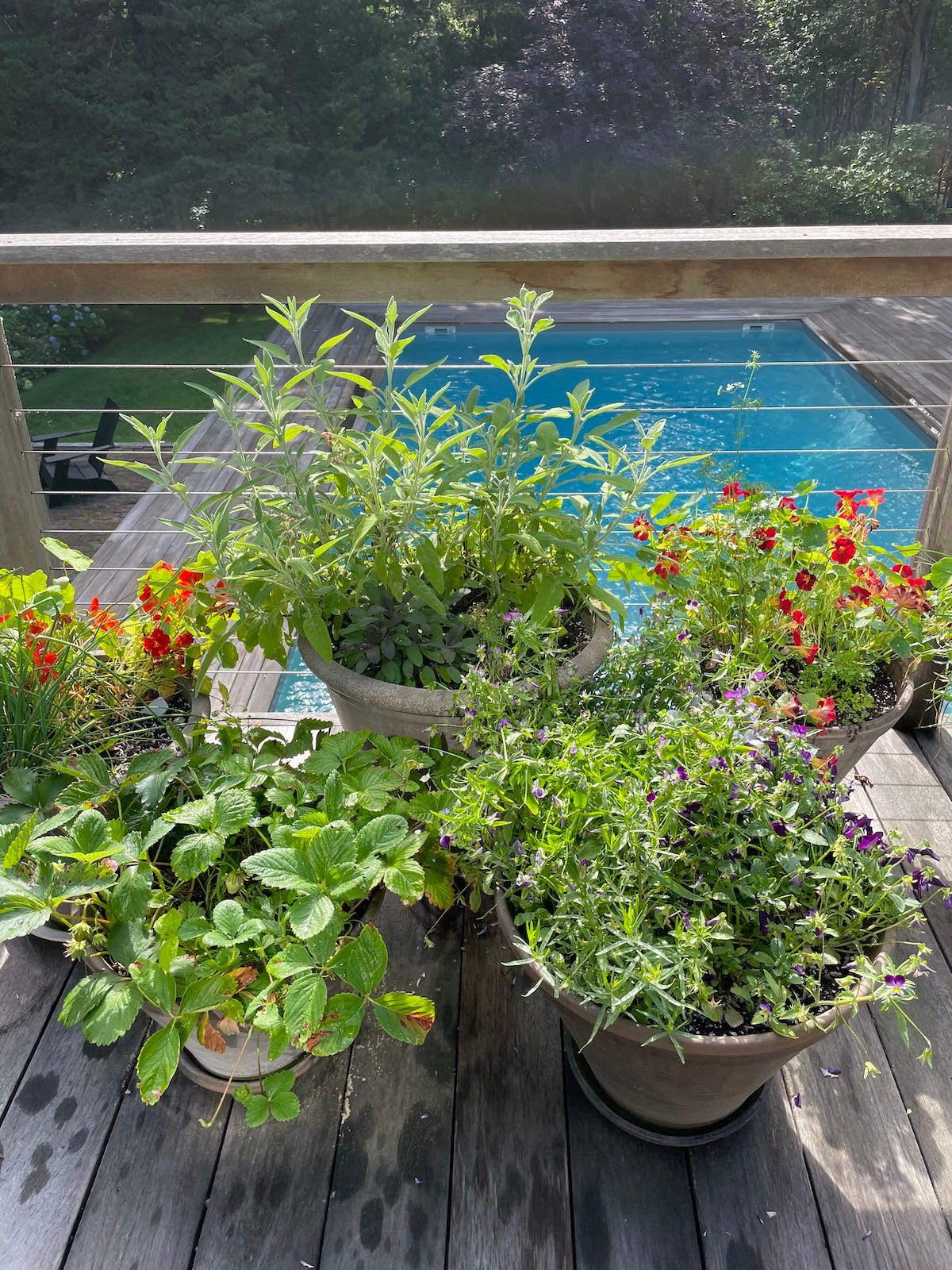
Instead, I do an extensive herb garden in containers on my deck, which is right outside the kitchen. Not only do I love the way it looks, but I can grow more unusual herbs that are difficult/impossible to buy at a store but that really take my cooking to the next level. And it goes without saying that the herbs you snip fresh are so much more flavorful and lively than anything you can buy at the store. I have two large containers that have drip irrigation (more like a trickle, but it’s enough to keep things alive) and a bunch of pots that need to be watered manually. Now that I live here pretty much full time (East Hampton), I can water them whenever things get dry. When I was commuting from the city, it was a little more touch and go.
I’ve been experimenting with companion planting too. Certain things thrive when planted together. My approach is completely trial and error, and when something doesn't grow well for me, I will eventually give up, but not before trying a new location or a new companion. My tarragon is doing extremely well in the same pot with chives, and also seems to enjoy the company of violas, which not only look extremely pretty in the pot, but are edible too. They also jump from pot to pot, which I don't mind at all.
I’ve learned to give everything more space. I used to jam too many plants into one pot so that it would look good at the time of planting, but, before too long, they would be crowded, which probably impaired their growth.
I have lots of perennials like thyme, savory, tarragon, bronze fennel, chamomile, mint, sage, chives, salad burnet, and also violas and strawberries. I don't know what happened, but, sadly, some of them didn't make it this year. I’m not sure if it was extreme cold, or January warmth followed by extreme cold, or squirrels digging in the pots, or what, but I had to replant my mature thyme and a few other things. Oh well.
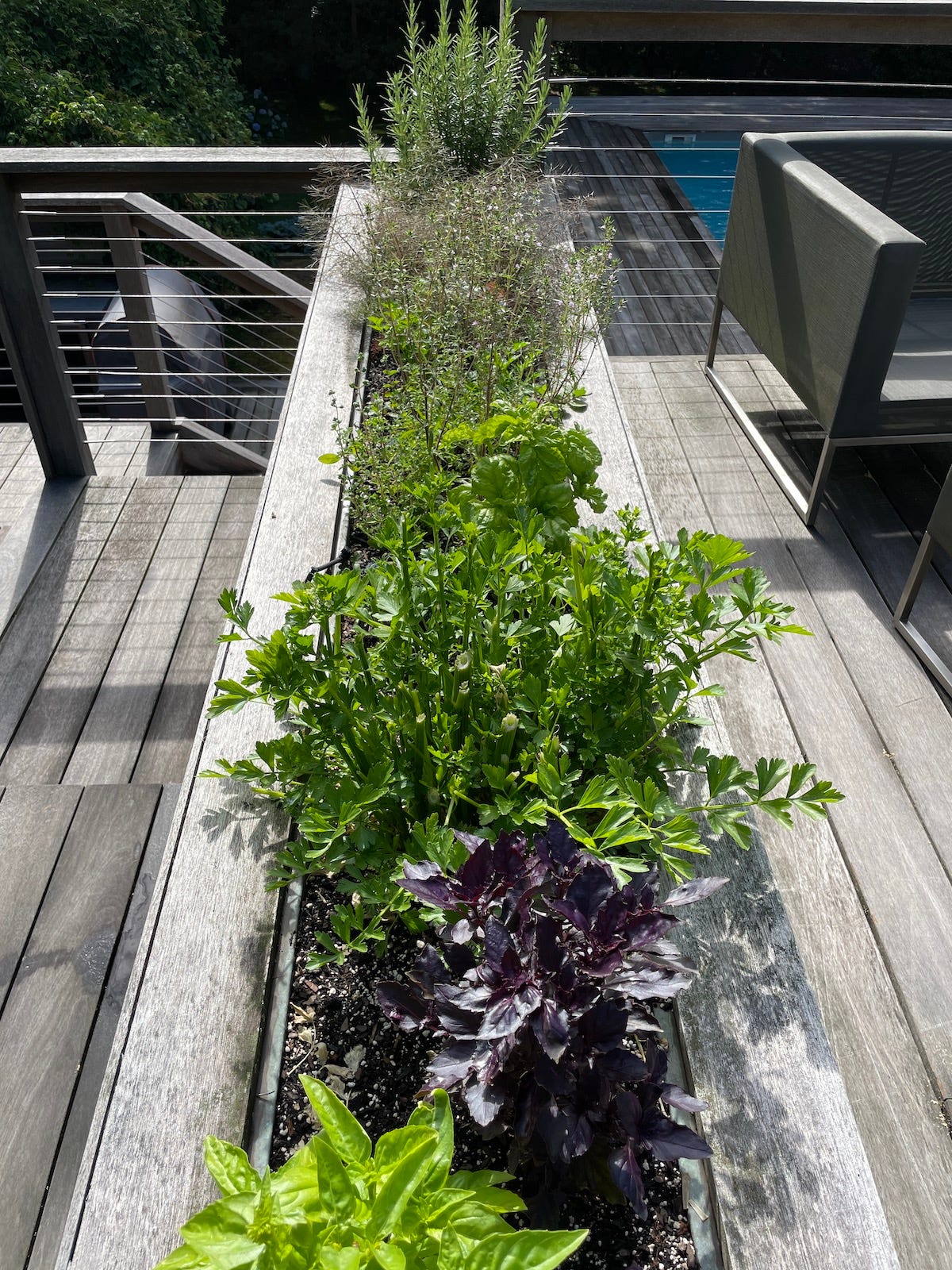
I usually start buying herbs in mid-May, but I hold off on planting basil until Memorial Day. At least in Zone 7, where I am, it’s considered too early. Last year I jumped the gun and my basil didn't look great all season, so I’ve learned to listen and be patient. I still bought my plants a little early and just nursed them indoors for a week or two. If it was a warm sunny day, I let them sunbathe a little outside. The other thing I’ve learned about basil is that it helps to plant something little bugs don't like nearby. The past few years I used marigolds, which I don't really like the look of, even in white (OK, OK, I’m a plant snob!), but this year the nursery where I typically shop didn't have them. Someone suggested that I try a scented geranium instead — which was labeled “citronella.” In any case, it’s working, and I haven’t noticed many holes in my basil.
The most important thing is to start with healthy plants. I like to buy my plants for the most part at an organic farm that grows many interesting varieties of plants, but even if all you have is Home Depot and a fire escape, that’s enough to start a small culinary herb garden. It's not too late, but hurry!
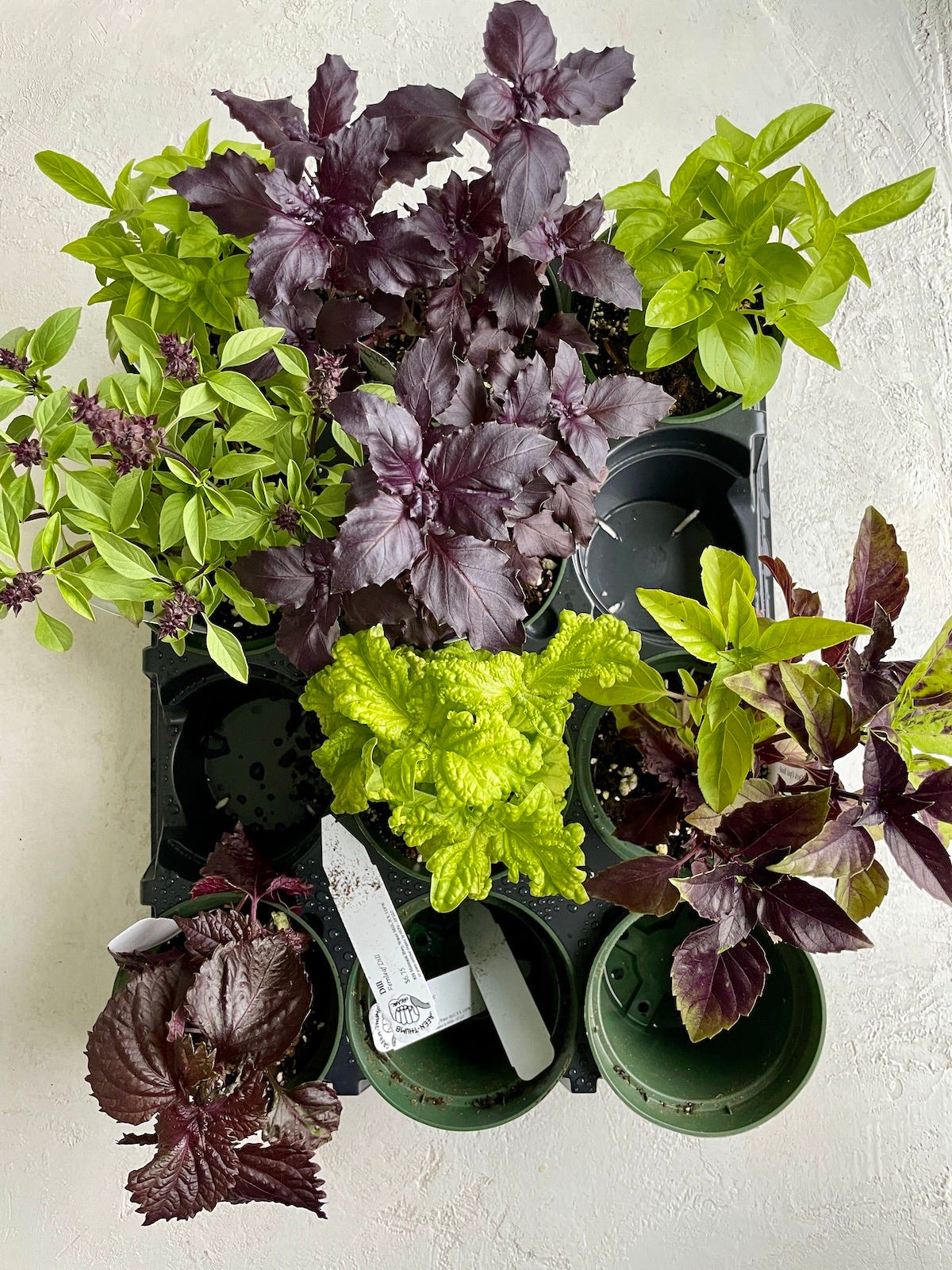
Here are some of my favorite herbs that I plant:
Shiso: lovely in Asian salads and anywhere you might use basil or mint
Chervil: like a more delicate and slightly anise-flavored parsley. One of the herbs in “fines herbes”
Tarragon
Nasturtium (not an herb per se, but the leaves and flowers are gorgeous and are really nice thrown into a salad for a little spice)
Winter savory: good for grilled or roasted meat
Summer savory: ditto
Rosemary: of course!
Thai basil: anywhere basil goes but especially wonderful in curries and soups
Opal basil: because it’s gorgeous and you can’t really find it at any store
Italian parsley: my plants don't grow that much but I keep trying. I use it sparingly because the yield isn't great
Mint: I let it take over one of my large containers because I use a lot of it
Cutting celery: like celery, but just the leaves — great for tossing into salads if you like the flavor of celery. This plant does really well for me and I can even use it in the middle of winter. It seems to never freeze or die back.
Bronze fennel: beautiful in the garden or as a garnish. I love the color and its feathery delicacy.
Marjoram: sort of like oregano, but milder and sweeter
If you have any questions (or suggestions from you expert gardeners!), please leave them in the comments! And keep reading for three herb-heavy dishes you can make with your harvest.

Mixed Peas over Whipped Feta
Serves 4
This salad is a pure expression of springtime (or early summer!), so save it for that wonderful moment when you go to your farmer’s market and find all these beautiful and tender ingredients all at once.
8 ounces sugar snap peas
4 ounces snow peas, left raw if very young
1 cup shelled fresh English peas
8 ounces feta cheese, crumbled
4 to 6 tablespoons milk or heavy cream
1 to 2 tablespoons fresh lemon juice, to taste
2 tablespoons olive oil, plus more for drizzling
Freshly ground black pepper
Pea blossoms or tendrils (optional)
Lemon zest
Flaky sea salt
1 cup loosely packed mixed soft fresh herbs, such as chives, mint, chervil, dill, or parsley
In a large pot of boiling water, blanch the snap peas, snow peas, and English peas. Cook just 10 to 15 seconds, until bright green, and refresh in a bowl of ice water. Drain well and pat dry on paper towels.
Combine the cheese, milk, lemon juice, and oil in the bowl of a food processor and process until completely smooth. Season with pepper. Add more milk if needed to thin to a creamy consistency.
Spread the whipped feta on a platter or individual salad plates and top with the mixed peas. Zest a lemon over the top and drizzle with oil. Sprinkle with salt and grind pepper over the top. Finish with the herbs and pea blossoms or tendrils.

Sugar Snap Pea and Radish Salad
Serves 4 to 6
When sugar snaps are in season, I tend to eat them raw, because they’re so sweet and tender. I do like to crisp them up a little, though, in a bowl of salted ice water for 10 or 15 minutes before slicing them. Of course, if you prefer, you can cook them first by dropping them into a big pot of boiling water and letting them cook no longer than 10 seconds, giving them one good stir, then immediately draining and transferring to a big bowl of ice water. You might balk at the thought of slivering all those peas, but please don’t! It really only takes a few minutes and it will give you a chance to practice your knife skills. Personally, I look forward to meditative tasks like this one, and I don’t think of them as drudgery. Cutting the snap peas in this way makes them a joy to eat, and to look at, and also lets them absorb the dressing in a way that whole snap peas never could.
1 ¼ pounds sugar snap peas, strings removed
Salt
1 tablespoon minced shallots
1 tablespoon unseasoned rice wine vinegar
2 teaspoons honey mustard
Freshly ground black pepper
2 tablespoons neutral oil, such as safflower or grapeseed
1/2 cup slivered fresh mint leaves, plus whole leaves for garnish
6 to 8 radishes, sliced paper thin, preferably on a mandoline
Remove the strings from the sugar snap peas and soak in salted ice water for 15 to 20 minutes. Drain well and pat dry with a paper towel. Slice the sugar snaps lengthwise into 2 or 3 slices, depending on their size, keeping track of the little peas that jump out.
In a small bowl, combine the shallots, vinegar, honey mustard, and 1/4 teaspoon salt, and season with pepper. If you’re not in a rush, let sit to let the shallots soften. Otherwise, slowly whisk in the oil. Toss the dressing with the snap peas and toss in the slivered mint and radishes. Sprinkle on more salt and pepper and some whole mint leaves.
Smoky Eggplant Dip
Serves 6
I make this dip all summer long, when eggplants are plentiful and inexpensive. I have a gas grill outside my kitchen door, and I use it often for things like this. If I had to start a fire to cook three eggplants, I’m pretty sure I wouldn’t do it as often (but if you’ve already started a fire for something else, it’s a great time to cook them). That said, you don’t need a grill at all. Second best is cooking right on the gas burner of your stove. If you don’t have that, you can use your broiler. The idea is to blacken the heck out of them however you cook them so that when you peel off all that black skin, a smoky flavor remains.
3 small Italian eggplants, about 1 pound each
1 to 2 garlic cloves, grated
1/2 cup plain Greek yogurt (any fat content) or labneh
2 tablespoons tahini
2 to 3 tablespoons fresh lemon juice, or to taste
1/4 cup fresh Italian parsley leaves
3/4 teaspoon salt, or to taste
Pinch of cayenne pepper
To garnish (use any or all):
Olive oil
Sumac
Fresh Italian parsley leaves
Mixed fresh herbs
Chopped oil-cured olives
Halved or quartered cherry tomatoes
Heat a grill to high.
Prick the eggplants all over with a fork so some steam can escape while they’re cooking. Roast the eggplants, whole, on the grill, giving them a quarter turn every 4 to 5 minutes. Grill until the skin is charred and the flesh is soft and creamy, 20 to 25 minutes. Remove from the heat and let sit in a bowl until cool enough to handle but as hot as you can stand it. Pour off the excess liquid. Peel the skin off the eggplants, transferring the flesh to a sieve over a bowl as you work. Mix the garlic into the hot eggplant. (Combining the garlic with the eggplant while it is hot will help to soften its blow.)
Transfer half of the eggplant to a food processor and add the yogurt, tahini, lemon juice, parsley, salt, and cayenne to taste. Pulse until well combined. Add the remaining eggplant and pulse just a few times, until coarsely chopped, so there is some texture. Adjust the seasonings. Transfer to a shallow bowl and add your choice of garnishes.
What’s your favorite summer ingredient?
A final note! On Wednesday, I started a discussion thread with full-access subscribers, asking which ingredient everyone is most excited to cook with this season now that summer is officially here. As predicted, tomatoes are in the lead! Here are two Susanality recipes from the archives that star tomatoes, in case you too are loving tomato season: Grilled Caprese Salad + Slow-Roasted Tomatoes. If you want to join in on the discussion — and also receive a newsletter every Friday plus two Wednesdays a month — consider becoming a paid subscriber.





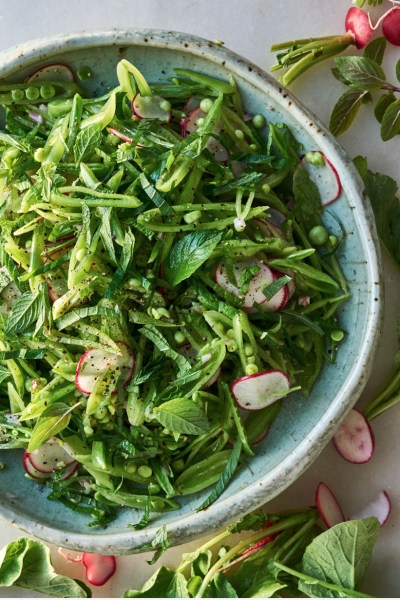
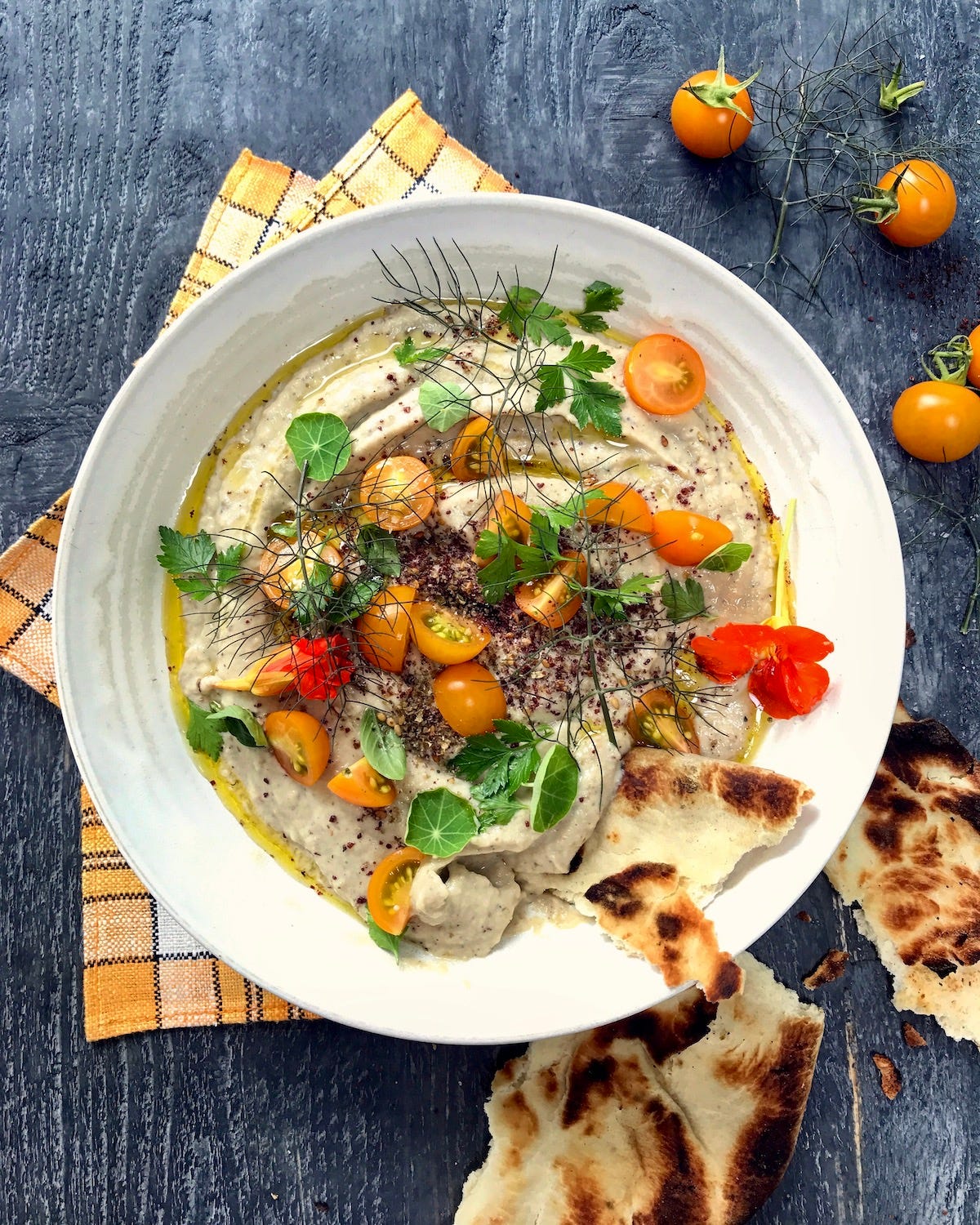
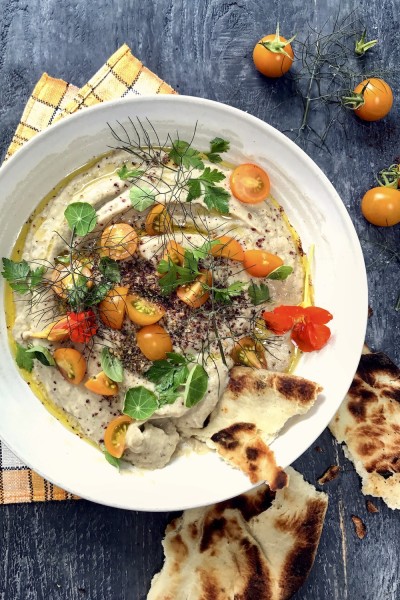
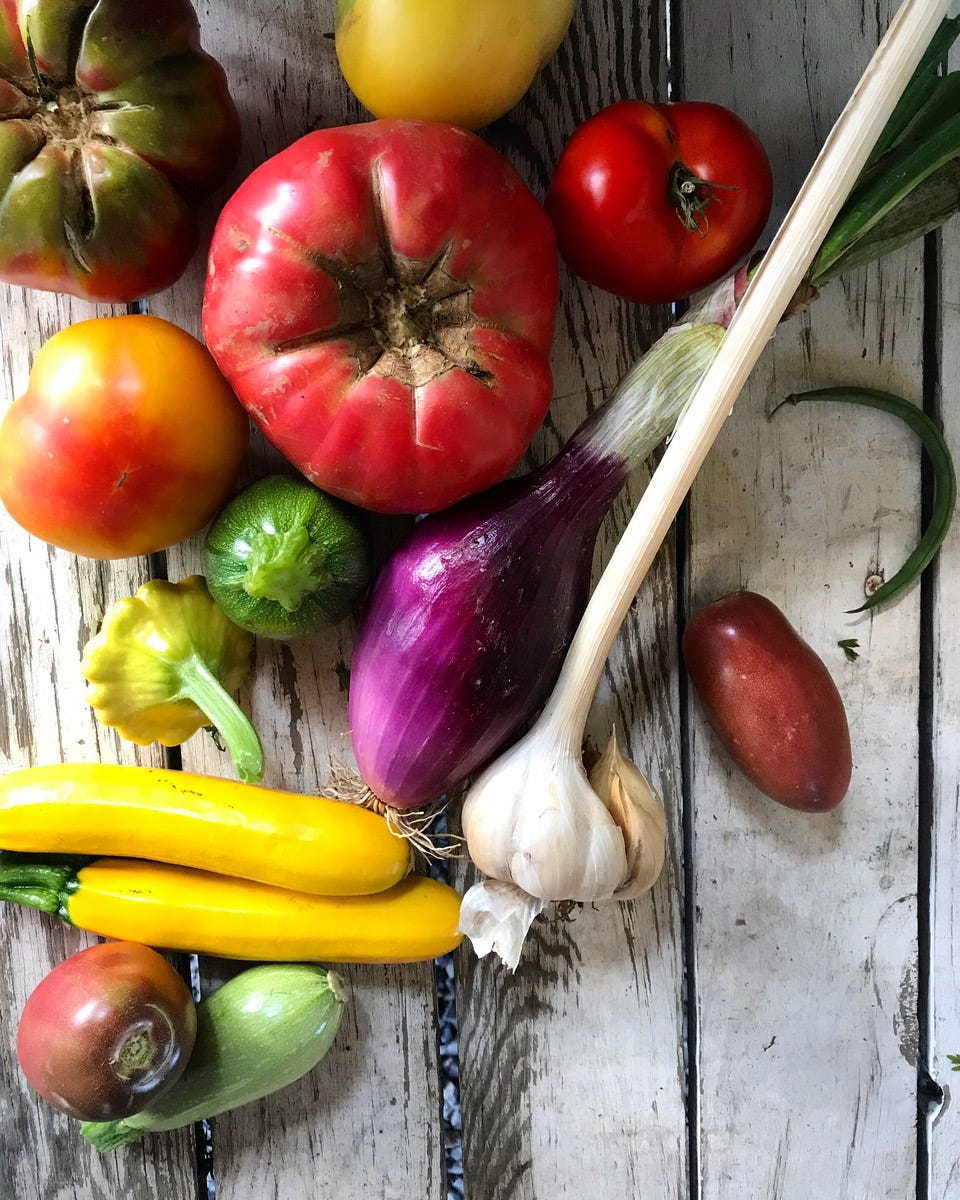
May I ask - in the photo with many different basil varieties + red shiso - what is that wrinkly, almost-chartreuse one in the middle?
Love these three recipes!! Exactly what I want to be eating this week.